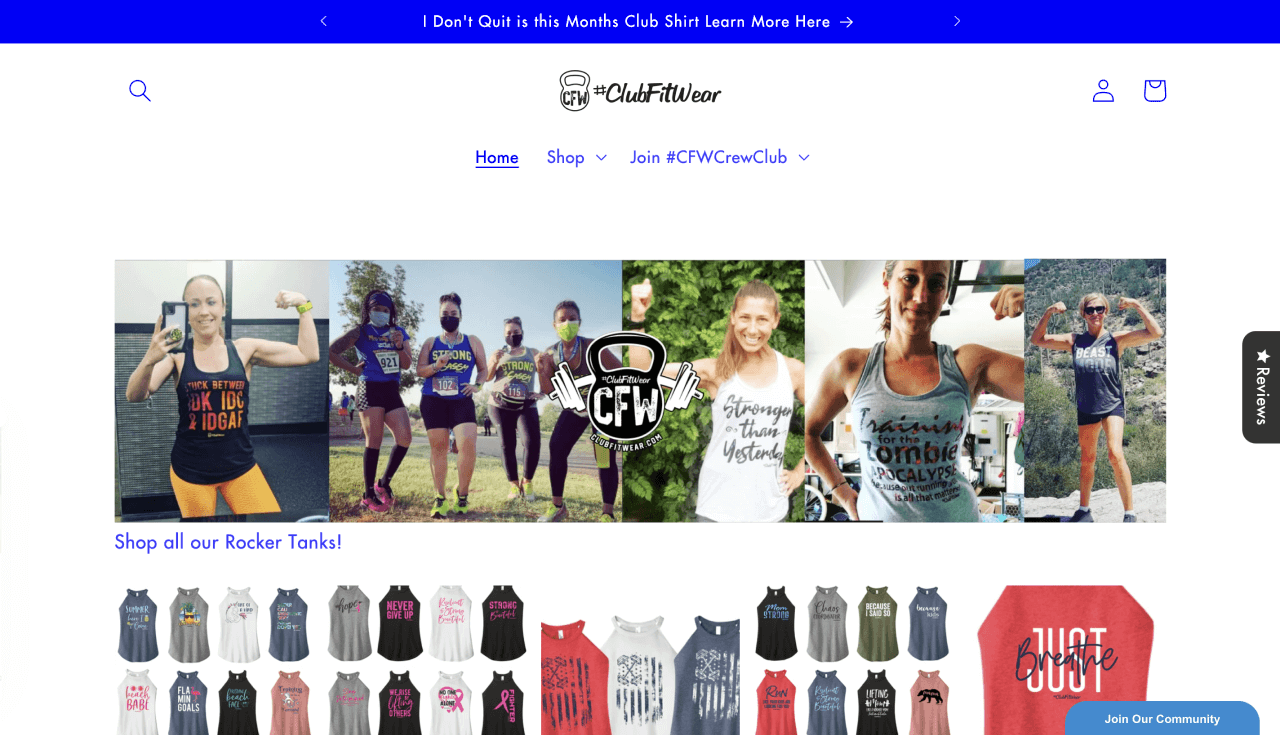Earn passive income with Printify
Dropshipping vs affiliate marketing. The battle between these business types has been raging for a while now. Two popular business models; two easy ways to make money online.
While dropshipping involves selling physical products without any inventory, the affiliate marketing model is all about promoting other businesses and their products – earning a commission for each generated sale.
In this article, we weigh the pros and cons of each, helping you choose the most suitable way to earn passive income online.
Dropshipping 101: What is it?
In short, dropshipping is a fulfillment process that doesn’t require a physical store – a low-risk business model that allows people to sell products online without worrying about manufacturing, warehousing, or shipping.
While dropshipping suppliers handle all the heavy lifting, store owners have more time to focus on marketing and growing their businesses.
Industry data: The business landscape is promising – experts predict that the global dropshipping market will reach $476.1 billion by 2026.
How does the dropshipping business model work?

In dropshipping, entrepreneurs sell another company’s products in their eCommerce store, taking a cut for themselves.
Typically, it works like this:
- You sign an agreement with one or multiple dropshipping suppliers (such as AliExpress, Alibaba, and others) and list their products for sale.
- A customer buys a product from your online store.
- You forward the order information to their supplier.
- The supplier processes, packages, and ships the order directly to the customer.
With the dropshipping model, you can set your own prices. The customer pays the retail price while you pay the wholesale price. The difference is profit.
Advantages and disadvantages of dropshipping
Dropshipping is a great business model and a convenient way to earn money online. While it has many advantages, there are some downsides, too. Aspiring entrepreneurs should carefully consider whether it’s right for them.
Advantages:
- Easy to start. When compared to traditional business models, dropshipping is easy to start and manage. The supplier manufactures, packages, and ships products directly to your customer.
- Low upfront costs. One of the biggest advantages of dropshipping is that you pay for a product only after a customer buys from you. Starting a dropshipping business doesn’t require much investment.
- Less risk. No need to invest in products, equipment, employees, or premises. The suppliers hold inventory for you.
- Wide range of products. Without having to store inventory, you can offer different products and add them to their online store at no additional expense.
- Easy to grow. With suppliers doing all the work, you have more time to scale their businesses. If you build a popular brand, you can set your own price and profit margin.
- Flexible location. You can work from anywhere, managing operations remotely.
Disadvantages:
- High competition. The market is quite saturated with the rising popularity of dropshipping
- By learning how to price a product, it’s easier to stand out and attract customers.
- Low profit margins. The largest disadvantage. Many eCommerce stores sell similar products, which results in price wars and smaller profits.
- If you have experience in running a dropshipping business, selling high-ticket dropshipping products is a great way to get higher profit margins.
- Less quality control. Typically, you have no say over product quality, so it’s vital to find dropshipping suppliers who offer high-quality products. Always order samples to avoid trouble down the road.
- Supplier errors. Even the best suppliers make mistakes, resulting in botched orders or missing items. Try to thoroughly vet suppliers to keep mistakes to a minimum.
- Customer service. When something goes wrong, a you must take responsibility for providing customer support that’s effective and timely.
- Limited branding. Unlike Print on Demand, dropshipping doesn’t allow customization, which makes it difficult to create your own brand and build a reputation.
Start a Print on Demand dropshipping business today!
Examples of successful dropshipping businesses
While the theory is great, nothing’s better than learning from real-life examples. Here are a few online stores worth a look.

Notebook Therapy is a high-quality online store with an appealing design and color palette.
What makes this dropshipping store great?
- Wide range of cute stationery. Notebook Therapy sells notebooks, journals, pencil cases, stickers, and other accessories.
- Seamless customer experience. Easy to navigate, fully responsive, and beautifully designed.
- Professional images. With high-quality product images, the store leaves a stunning impression.
With a carefully-chosen niche – cute stationery – they have no problem attracting and retaining customers.
Quick tip
Increase the likelihood of success by learning what a niche is, selecting products, and building a store around it.

Until Gone positions itself as the go-to destination for daily deals, effortlessly attracting bargain hunters and everyday savers.
What makes this eCommerce store great?
- Wide selection of products. The store has something for everyone – from apparel to electronics to pet supplies.
- Minimalistic design. Until Gone avoids all clutter, making sure visitors focus solely on their products.
- Social proof. With over 43,000 reviews and a rating of ‘Great’ on Trustpilot, the store is a good example of how to manage customer support.
Until Gone offers great deals and warranties on all goods, keeping customers happy and confident in their purchases.

A store offering fitness gear with motivational slogans, helping their customers achieve their goals.
What makes this online store great?
- Wealth of products. Club Fit Wear has a large variety of inspirational t-shirts, tank tops, and hoodies.
- Affordability. In addition to special deals, the products themselves are very affordable.
- Free of clutter. With ample white space and a simple layout, the store is easy to navigate.
Club Fit Wear has a well-chosen niche that has helped them build a loyal customer base.
Quick tips
Look at the most successful Shopify stores to find inspiration for your dropshipping store’s design.
Start a dropshipping business with Printify
As a print-on-demand dropshipping company, Printify has everything you need to successfully start a business.
- Beginner-friendly. By signing up, you get access to our easy-to-use platform – 100% free and accessible to everyone.
- No inventory, no hassle. Start your own business without any inventory or warehousing costs.
- 850+ customizable products. The Printify Catalog has more than 900 high-quality products at the best prices.
- Free Design tool. Easily create unique products with our user-friendly Product Creator (formerly known as Mockup Generator).
- No logistical worries. Our carefully-vetted dropshipping suppliers print, package, and ship directly to your customer’s doorstep.
- Global network of Print Providers. With more than 90 Print Providers and 110 printing facilities worldwide, you can reach your customers quickly, wherever they are.
Start a Print on Demand dropshipping business today!
Affiliate marketing 101: What it is?
In a few words, affiliate marketing is an online business model in which third-party publishers – bloggers, YouTubers, TikTokers – promote a company’s products or services. They receive a commission if a person clicks on the affiliate link and completes the intended action.
A company may work with an affiliate to increase sales, traffic, and brand awareness. Most affiliate programs reward publishers for a sale.
While affiliate marketing requires patience and planning, it’s a great way to earn an income without investing a lot of money.
How does the affiliate marketing business model work?

In this low-risk business model, an affiliate marketer – often a blogger, influencer, or content creator – shares an affiliate link on their website, in their blog, on social media platforms, or elsewhere where they’ve built a following.
The affiliate earns a commission each time someone purchases through their affiliate link.
Typically, this is how an affiliate program works:
- The affiliate partner shows a company’s ad or shares a link on their website, blog, or social media platform.
- A visitor clicks on the add or affiliate link.
- After being directed to the company’s website, the visitor makes a purchase.
- The purchase is confirmed by the company.
- The company pays the affiliate a commission based on their agreement.
Pros and cons of affiliate marketing
Affiliate marketing has both pros and cons, which are vital to examine before joining an affiliate program.
Affiliate marketing pros:
- No barriers to entry. Unlike some traditional business models, affiliate marketing doesn’t require specific education, follower count, or other restrictions – anyone can become an affiliate marketer.
- Easy to start. Affiliates don’t have to create their own products, worry about shipping, provide customer support, or deal with other complexities of running an online business.
- Instead, they advertise products using their affiliate link and earn a commission for sales that result from their marketing efforts.
- Low investment. An affiliate marketing business has low startup costs, so everyone’s welcome to try it. No need to invest in any inventory, rent office space, or hire employees.
- Typically, setting up and running an affiliate marketing website – domain registration and web hosting – are the main expenses.
- Passive income. Initially, you’ll need to invest time in creating traffic sources, but afterward, the affiliate links will continue to generate commissions.
- Freedom of choice. Affiliate marketers can choose the products they want to advertise. In addition, they have the freedom to choose their own marketing strategies.
- You can tailor your approach to the target audience, making your affiliate marketing campaigns more effective.
Affiliate marketing cons:
- Low commission. While it can be lucrative, commission rates are generally low and can vary depending on the company you partner with.
- High competition. When it comes to low-risk business models, competition is always fierce. In a niche that’s saturated, there’s a constant struggle for attention, making it difficult to outcompete experienced affiliate marketers.
- No guaranteed income. There is no promise of profit. The money affiliates can earn depends on their marketing skills and persistence.
- Lack of control. You can’t control product quality, price, or delivery time. In turn, it can negatively impact how followers perceive your online persona.
- Time-consuming. To succeed, you need to put your heart and soul into creating high-quality content, building a loyal following, and adapting to market trends.
Successful affiliate marketing businesses: A few inspirational examples

Wirecutter is a magazine-style affiliate website, listing gadgets, gear, and appliances to save people time and trouble. The site features links to websites such as Amazon, Home Depot, and Nordstrom.
What makes it more popular than other businesses?
- Expertise personified. Their team consists of journalists and researchers. Through a rigorous approach to reporting, they deliver reviews that reflect their in-depth knowledge of the products they promote.
- Honesty above all. With a declaration on their homepage clearly stating that they may receive a commission, they build trust with their audience.

Consumer Search is a vast affiliate website. This marketing business helps to simplify consumer product research by bringing products that best suit their lifestyle.
What can affiliate marketers learn from this site?
- Comprehensive reviews. Apart from simply ranking products, they take a human-centered approach, focusing on what reviewers love, hate, and find most useful about each product.
- Smart keyword strategy. When setting up a website, choosing a niche and picking the right keywords is vital. This site targets keywords related to the ‘best’ of each product type.
Quick tip
Learn how to create an affiliate marketing website from our in-depth guide. Afterwards, promote affiliate links to increase the likelihood of success.
Become a Printify affiliate marketer
With the Printify Affiliate Program, you earn a 5% commission on every sale your referrals make for the next 12 months. What’s more, there is no ceiling on how much you can earn.
As an affiliate partner, you get access to our affiliate dashboard to view statistics on your daily clicks and conversions, along with information on commissions.
Whether you’re a blogger, influencer, or educator – our affiliate program is a great way to boost your income.
Here’s how it works:
- Join the program. Sign up to become a Printify Affiliate. The whole process only takes two minutes. We’ll review your application within 48 business hours.
- Share a link. Share the affiliate link with your target audience on social media, in a YouTube video description, or wherever you have a following.
- Earn money. You get a commission when someone clicks on the link and makes an order. Our active affiliate partners earn an average of $1,000 per month. The more you promote, the more you can earn.
Dropshipping vs affiliate marketing: The comparison

If you’re just starting, it may be challenging to decide whether you should go the affiliate marketing route or the dropshipping route, so here’s a quick overview of both.
Affiliate marketing vs dropshipping
| Affiliate marketing | Dropshipping | |
|---|---|---|
| How it works | Earn commissions by promoting other people’s products | Earn by listing and selling products in an online store |
| Startup costs | Very low An affiliate marketing business can promote products through its own website, social media, or blog | Low Dropshippers need to invest in an online store and marketing and don’t need to worry about inventory or logistics |
| Profit margins | Lower The profit you make is the commission on the product you sell, typically paid monthly | Higher Set your own product prices. The profit you make is the selling price minus the wholesale price |
| Time commitment | Average While it can take time to create content and establish trust, affiliate marketing continues to generate income over time | High Entrepreneurs must create and maintain their online store Requires time to set up and manage |
| Risk level | Low Risk No investment or commitment. Affiliate marketers choose who they promote | Low Risk No investment in inventory, warehousing, or logistics |
| Growth potential | High with limitations: fixed commission rates, no control over price or quality Grow through increasing traffic and promoting products in various niches | High: very easy to scale Grow by expanding the product selection and increasing marketing efforts |
When it comes to affiliate marketing vs dropshipping, the choice depends on your objectives and preferences.
Dropshipping vs affiliate marketing: The winner is?

While both dropshipping and affiliate marketing are powerful ways to make money online, they have their own advantages and disadvantages. The winner is not clear-cut because it’s really up to you – your strengths, skills, and goals.
After you’ve done soul-searching, choose the appropriate business model by carefully considering the following:
- Ease of start
- Startup costs
- Profit potential
- Time Investment
- Growth potential
Affiliate marketing is best for those who already have a devoted following – while dropshipping may be best for those who want to open an online store, build their own brand, and enter the world of eCommerce.
Which is a more profitable business model? Ultimately, it depends on your level of expertise because both dropshipping and affiliate marketing provide great potential for profit.
FAQ
Yes, but it takes strategy and consistency. To earn $100 daily, focus on building traffic through SEO, social media, or email marketing. Promote high-commission products or recurring services.
Many affiliates combine blog content, YouTube tutorials, and targeted ads to reach that goal. It can be done, but it requires effort, proper research, and ongoing optimization.
The 80/20 rule means most of your earnings (80%) come from a small part (20%) of your work. In affiliate marketing, only a few links, products, or posts usually generate most of your income. Once you find what’s working, spend more time promoting those and less time on the ones that don’t bring results.
Affiliate marketing is great for passive income, but Print on Demand can be more profitable long-term. You control the products, pricing, and branding instead of relying on commission rates.
With Printify, you can create custom products, build a recognizable brand, and keep the profits – something affiliate marketers can’t fully do.
No, affiliate marketing vs dropshipping are different models. Affiliates earn a commission for referring buyers to purchase from another company. Dropshippers sell directly through their own stores and control the product selling price.












